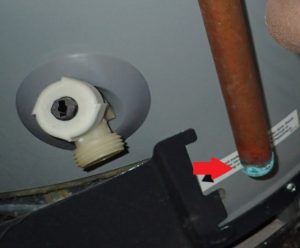Can you imagine what it must have been like to live without running hot water in our homes? Near the end of the 19th century the storage water heater was born in Pittsburg. So water heaters as we know them today have only been around for a little over a hundred years.
The energy required to heat water can come from a variety of sources including natural gas, propane, heating oil, electricity and solar. When water is heated up for your shower, dishwasher or laundry machine the volume of the water expands. In most homes the expanding hot water pushes cold water back out through the piping and into the street water lines.
In some locations where the pressure of the cold water being delivered by the city is more than 80 psi, there may be a pressure reducing valve installed on the incoming water line where it enters the home. This valve helps protect the plumbing inside the home from damage caused by high pressure, but it also creates a closed system where the excess volume of expanding hot water has no place to go. In that case your water pressure increases.
 Sometimes the pressure gets relieved through the TPR (temperature and pressure relief) valve near the top of the water heater. A long tube, generally made of copper, runs down the side of the water heater and is connected to the TPR valve. This tube should always be open on the end closest to the floor. The TPR allows excess pressure to escape from the water heater and is designed to prevent the tank from exploding.
Sometimes the pressure gets relieved through the TPR (temperature and pressure relief) valve near the top of the water heater. A long tube, generally made of copper, runs down the side of the water heater and is connected to the TPR valve. This tube should always be open on the end closest to the floor. The TPR allows excess pressure to escape from the water heater and is designed to prevent the tank from exploding.
If you see a damp spot on the floor directly under this tube or any green corrosion near the end of the tube chances are you have a leaky TPR valve. You may have excess pressure created by the water heating process or it could just be a defective valve. Either way, as a professional home inspector I usually suggest calling in a licensed plumber to investigate. Most of the time it’s an easy fix and could save you money down the road.
